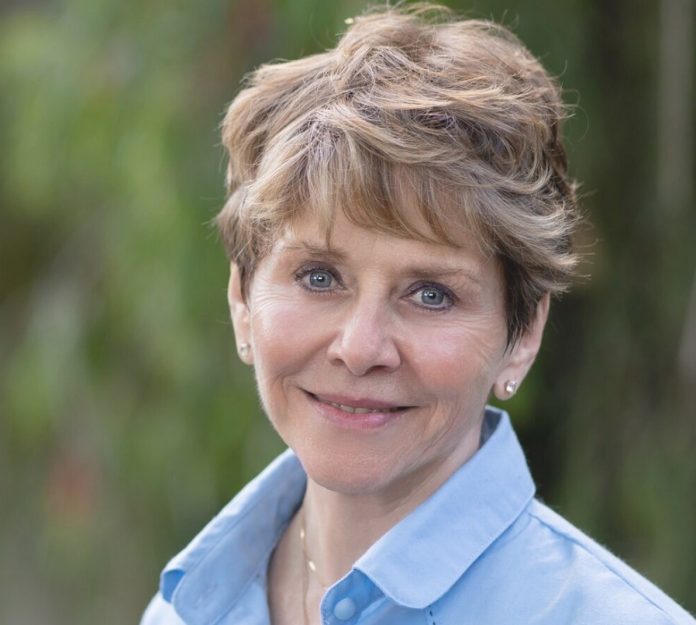Samm Hurst is a project scientist who researches public health and family medicine, and teaches in the Public Health Graduate Program at University of California, San Diego. She is third-generation East County and is running for a seat on the city council representing district four of Santee.
She said she wants to eliminate what she says are “the most anxiety provoking needs” of food and shelter as the city emerges from the COVID-19 pandemic.
“I am very much in support of using federal grant money for small businesses. I’d like to make the application process for getting money a much easier process and much quicker process as well,” Hurst said.
“Perhaps, we need to begin addressing how people participate in the workforce, for example being able to work at home part or full time— it would save money for businesses on rent, help support the service workers who are fighting traffic and so on,” Hurst said.
She said the pandemic “gave us the opportunity to evaluate how we live,” that “people are forgetting what traffic was like prior to COVID and sort of have traffic amnesia”.
Acknowledging a trolley commute from Santee can sometimes take longer than driving and is not always practical to some destinations without connecting transportation, she said she’d “love to see Santee Town Center developed with a nearby, beautiful mixed-use housing development” such as the River Walk area of San Antonio. The Texas neighborhood features shopping, restaurants and arts facilities connected by walkways and is located nearby public transit lines.
Hurst projects the idea onto Santee and describes what might be included in a local version built around affordable housing.
“The first floor of the building is entirely businesses: it could be barbershops, banks, a health club, a small sheriff’s station, anything that people would need for their daily life or enjoy. Then, the upper floors would either be rentals or condominiums. It would be very easy to include rentals for very low or low-to-moderate incomes and they’d be living in an environment where many residents could even find jobs on the first floor,” Hurst said, describing a potential Santee development.
She envisions mixed-use developments that would address affordable housing needs and business development in a somewhat holistic approach, as well as meeting public transportation challenges.
“It would be easy to promote public transportation and would also enable visitors to easily take the trolley out to the center without having to worry about parking, residents could go out downtown for dinner with a beautiful enhanced environment; it would be a great amalgamation and it is doable— we have the kind of space that other parts of the city do not,” Hurst said.
She would like to see elected leaders and local developers “stop focusing on irresponsible and risky housing projects like Fanita Ranch or Carlton Oaks Golf Course project,” citing potential for Santee to ”facilitate housing that could support homelessness as well”.
Hurst does not believe affordable housing is being built in Santee “with the concerns of individuals who make low and moderate income” and said she would “love to see wraparound services where homeless are able to live in something like mixed-use housing with job skills services, health clinics, little eateries”.
She hypothesized: “perhaps a majority of Santee residents don’t know that the proportion of suggested housing types that are allocated to cities first by the state and then by SANDAG require that housing needs are met within brackets of income,” and said housing is supposed to be developed for “those people who can afford an above-moderate income, those that are lower and those that have a very low income indeed”.
Santee has made a mistake over the past eight years, she said, by allowing housing plans to be driven by economic priorities for the city’s government such as accepting payments from developers building higher-income bracket housing in lieu of creating lower-income bracket housing.
“I think housing policy should reflect the type of housing residents can actually afford. Santee clearly needs housing that is lower income and if we’re listening to Santee residents and we’re even remotely interested in meeting their needs, this city has to stop catering to only one kind of buyer and buy-in developer,” Hurst said.
As a candidate, she says she never has and never will accept developer money; her most recent financial disclosures show a series of $100 and $200 donations from individual Santee residents.
Hurst compared the situation surrounding candidates openly accepting donations from developers to her job where “I can’t even take a salary if I have a conflict of interest with an enterprise that is funding us and I cannot comprehend how a researcher is bound to these moral and ethical obligations— and I believe in them— but our city leaders are not”.
Having considered calls at recent protests to defund the police, Hurst said she is not a proponent of removing critical resources or salary for law enforcement but “I won’t deny having knowledge of the fact that the Sheriff’s proportion is the mother lode of the city’s budget.”
She purchased her own home, “in a subdivision called Prism” about 18 months ago.
“Prism is an affordable housing project. I look out my window and I can’t tell you the excitement I feel seeing the diversity in my community,” she said, where she learned about “the scarcity of homes in Santee and the lack of affordability for so many”.
She said the city needs to begin adopting modern values that include “far more representation of diverse families of color” she hopes to one day see mirrored in city council representation.














